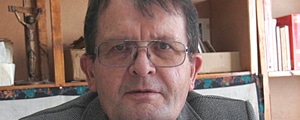
MORE and more cemeteries have to be opened up on the outskirts of Harare because there is no more space in the old graveyards.
Report by Fr OSKAR Wermter SJ
The old tombs on Pioneer Cemetery along (aptly named) Remembrance Drive are visible to the passers-by since the protective wall has partially collapsed, while the cemetery that used to receive the dead of Mbare (“Strachans”) remains hidden to the crowds of commuters on nearby Simon Mazorodze Road. But the living neighbours of the dead keep coming to the graves and do not forget.
Our culture forbids us to even think of bulldozing the dead of yesterday into oblivion so as to make room for today’s dead. It is fundamentally human to honour the dead. Pre-historical sites of burial grounds reveal to us the beginnings of humanity and human culture.
And yet there have been attempts in recent history, not just to remove fellow human beings from society by mass murder and genocide, but even to eliminate their dead bodies and totally annihilate them by “disappearing” them so that nothing remains by which to remember them.
Remembrance is the ultimate act of defiance which the pathological killers among the world’s rulers dread and cannot tolerate.
The Gukurahundi killers dumped the bodies of the slain in mine shafts. Captured rebels, their hands tied behind their backs, were thrown from military planes into the Congo river, a “trick” copied from the military dictators of Argentina who used to “disappear” their enemies by dropping them from aircraft into the Atlantic Ocean.
Hitler tried to remove the Jews from the face of the earth in his “death factories”. Total annihilation and no remembrance was the declared aim.
- Chamisa under fire over US$120K donation
- Mavhunga puts DeMbare into Chibuku quarterfinals
- Pension funds bet on Cabora Bassa oilfields
- Councils defy govt fire tender directive
Keep Reading
But the power of remembrance cannot be overcome. The mine shafts are not deep enough to conceal the dead for ever. Painstaking research has pieced together what happened during Gukurahundi and collected facts and figures.
The dead of the Rwandan genocide speak to us through eye witnesses like Immaculee Ilibagiza, the young woman who was “left to tell” (title of her first book ) the truth which the survivors must face up to. Creative writers also tell their stories, fictitious and yet fundamentally true. They insist on reminding us of what we prefer to forget (eg Christopher Mlalazi, Running with Mother, Weaver Press, 2012).
Remembrance is fundamentally human and the essence of our culture of honouring the dead. Those who wish to make us forget and “cleanse” our minds from dangerous memories are the real enemies of our and any other human culture.
A mother whose son was tortured and killed by agents of the apartheid state during the “struggle” witnessed to this by taking a defiant stance during the hearings of the Truth and Reconciliation Commission (TRC) , “We will have peace only when somebody comes to you and says: This is what I did, I did this and this and that and that. I do not want to lie to the house. “I will not be able to forgive anyone until I know who they are. Then I will shake their hands. Otherwise I will not be able to forgive somebody that I do not know” (quoted in : Hugh Lewin, Stones Against the Mirror, Cape Town 2011, p. 146).
Ineradicable memories which are ignored by the perpetrators who will not ask for forgiveness pose a great risk. Like a hidden poisonous substance in a body, it will corrupt and corrode a nation from the inside, a process more harmful than an attack by a visible enemy from outside.
Refusing to confront the injustices of our past and seek to make peace with the “disappeared”, those never honoured with a proper burial, dumped into mass graves, their names rubbed out , is like killing them a second time.
Fourteen-year-old Rudo in Mlalazi’s novel survives the “ethnic cleansing” because her name is Shona, meaning love, though her family is identified with the hated enemy.
In her person the old antagonism is overcome. There is no hope, no future, no life, if obsession with revenge and mutual suspicions and accusations keep people captive.
Freedom is found in facing the truth together. It is not forgetting that brings us forgiveness and peace, but remembrance and acceptance of guilt which in turn must lead to asking for forgiveness.
Fear of the dead as we hasten past their tombs is not enough. More particularly, there is no escape from those who were denied a place of rest and had their bones scattered in the bush.
They are not far away. They demand justice and respect .











